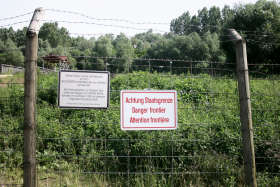The European Green Belt: Borders.Wilderness.Future
Press Conference
Friday, 3 July 2009
Based on cultural and economic aspects of this "enforced neglect", the biological and cultural diversity of this strip stretching from sub-arctic Lapland via the Baltic coast, the Central European uplands and flood plains to the Black Sea coast on the border between Bulgaria and Turkey is presented. The stories covered range from the delicacies of the Far North, such as reindeer meat and cloudberries, via the amber of the Baltic Sea coast to the floral treasures of the Balkan Mountains, and are illustrated by a wide variety of exhibits. This ultimately raises the question of the direction in which these border regions in the heart of Europe can and should develop in the future.
A project of the Upper Austrian State Museums and the University of Vienna for Linz 2009 European Capital of Culture.






